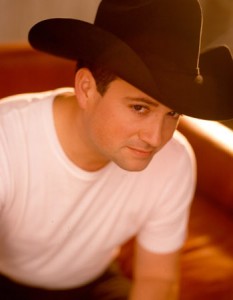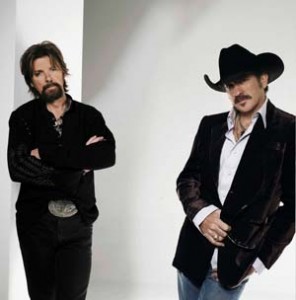
Tracy Byrd Starter Kit
 One of the side effects of the nineties boom was that every Nashville label started looking for young male acts that looked good in a Stetson and could sing with an accent.
One of the side effects of the nineties boom was that every Nashville label started looking for young male acts that looked good in a Stetson and could sing with an accent.
The end result was that some solid talent was discovered a bit too early, before they’d fully refined themselves into artists. Tracy Byrd’s a great example of this. Only 25 years old when his first single went to radio, Byrd had been plucked from the Beaumont, Texas music scene that had groomed Mark Chesnutt.
Byrd’s hit material from the nineties was reflective of what the B-list hat acts recorded during that era, though his vocal charm helped him elevate middling songs from time to time. He also turned in a few gems, with his music getting far more consistent as he entered his thirties.
His last studio album, 2006’s Different Things, was excellent, but radio had already moved on to the new twentysomethings at that point, artists who will probably be making better music a decade from now and being overlooked for the new, new twentysomethings.
Ten Essential Tracks:
“Holdin’ Heaven”
from the 1993 album Tracy Byrd
When surprisingly strong sales greeted the release of Byrd’s debut album, radio jumped on board. This catchy tune briefly knocked Garth’s “Ain’t Goin Down” out of the top spot, though Brooks would return to #1 a week later.

 When news broke of Brooks & Dunn’s impending breakup, we decided to move up our planned Starter Kit feature on this quintessential nineties act.
When news broke of Brooks & Dunn’s impending breakup, we decided to move up our planned Starter Kit feature on this quintessential nineties act. Amidst her generation of successful female country artists, Lorrie Morgan was the only one who was clearly from the tradition of heartbreak queen Tammy Wynette, with a healthy dose of Jeannie Seely in the mix. With her contemporaries far more shaped by the work of Linda Ronstadt and Emmylou Harris, Morgan was instrumental in keeping the sound of female country from the sixties still relevant in the nineties.
Amidst her generation of successful female country artists, Lorrie Morgan was the only one who was clearly from the tradition of heartbreak queen Tammy Wynette, with a healthy dose of Jeannie Seely in the mix. With her contemporaries far more shaped by the work of Linda Ronstadt and Emmylou Harris, Morgan was instrumental in keeping the sound of female country from the sixties still relevant in the nineties. The first week of Back to the Nineties will wind down with women who have something in common. Each one is the daughter of a legendary country star that struggled to break through during the late seventies and most of the eighties, then became commercially successful throughout the nineties.
The first week of Back to the Nineties will wind down with women who have something in common. Each one is the daughter of a legendary country star that struggled to break through during the late seventies and most of the eighties, then became commercially successful throughout the nineties.